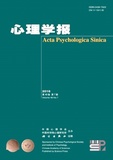|
|
Parent-child relationship and the comparison between parents and their children on their children’s mate preference
WANG Yan, QIAN Xiaoyun, TIAN Qian, GAO Jun, LI Xiaoxu
2018, 50 (1):
91-100.
doi: 10.3724/SP.J.1041.2018.00091
One of the important factors influencing young people’s mating choice would be their parents’ preferences for their children-in-law. Especially in China with only one child in most families, parents’ involvement could not been ignored. However, the literature is very limited on the differences on mating preferences between parents and their adult children within the same families. Few studies on Chinese families have been conducted on this topic so far. Based on questionnaires colletcted from 1142 individuals from 339 Chinese families (mother, father and their adult unmarried child), this research explored the differences in the mating preference for the potential children-in-law between the parents and their adult children. A total of 7 factors have been extracted in the exploratory factor analysis, which were namely, good character, good genes, good personality, good resources, same nationality and political background, good parents and good spouse. Based on these 7 factors, the differences in mating preferences between the two parents and between parents and their adult children have been explored. Compared with parents of the sons, the adult daughters’ parents were more concerned on the mating standards on good characters, good resources and same nationality and political background. Comparisons between the two parents showed that as compared to mothers, sons’ fathers were more concerned with the appearance of their potential daughter-in-laws. Futhermore, the adult daughters’ mothers demanded more on their potential son-in-law’s good characters, good personality and good resources. As for the differences between parents’ and their adult children, the children were more concerned with their future spouse’s good genes and pleasurable personality whereas the parents emphasized more on the good characters, good resources and same nationality and political background of their potential child-in-laws. Finally contrary to the common belief, results showed the closer the relationship between parents and their adult children, the greater were the differences between their mating preferences. The correlational analyses showed that the closer the fathers’ perceiced relationship with the children, the greater their demand on the traits of “good characters” and “good parents” for their child-in-laws as compared with their children’s preference. Similarly, the closer the mothers’ perceived relationship with the children, the greater the concern the mothers would have on the trait of “good characters” for their children-in-laws. However, the closer the relationship between mothers and sons, the more demanding the sons would be on the preference for “good spouse” as compared with mother’s preference. Contradictorily, children’s perceived relationship with parents did not have impact on the difference between parents and adult children in the children mate preference.
Related Articles |
Metrics
|




